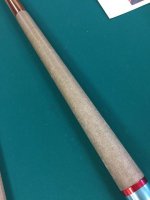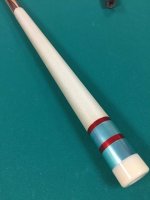Still packing & moving and no lighting available for decent pics
These just back from Paul Drexler, two more really old Josswest's.
Paul saved the Cortland on one, and did a fantastic job matching the stain and saving/cleaning the Cortland.
We went with leather on the other cue for something different.
Too bad I don't have a "before" pic because these were not in good condition.
I did play with both of these cues yesterday and used both the original shafts with Searing Precision mediums, yellow micarta ferrules as well as the shafts Paul made with yellow micarta ferrules, Moori jewel tips.
Really good players all around.

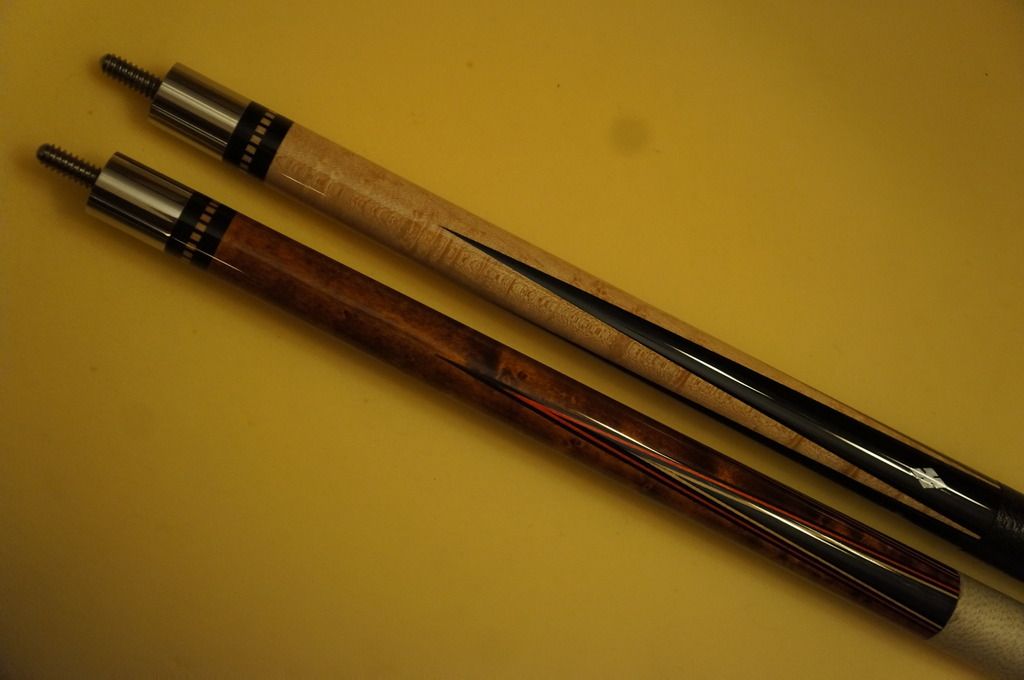
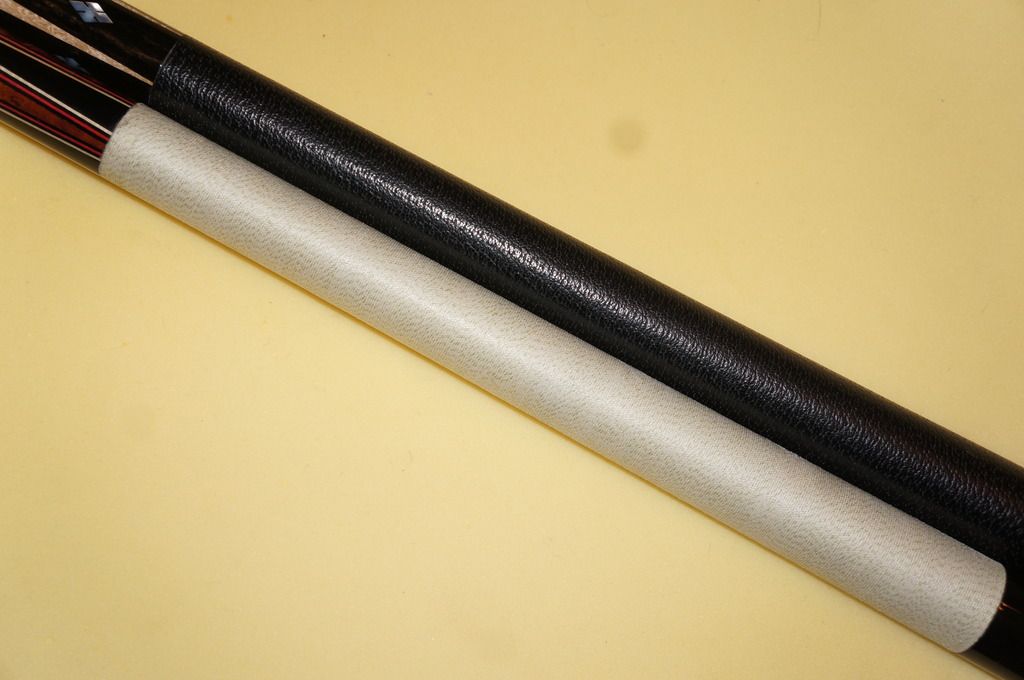
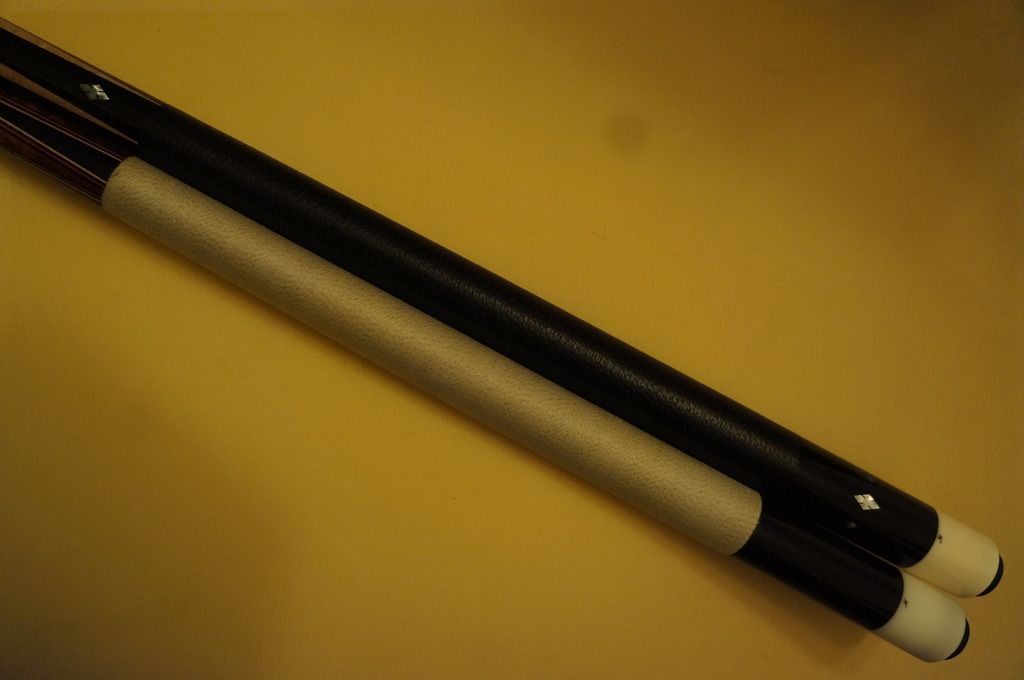
These just back from Paul Drexler, two more really old Josswest's.
Paul saved the Cortland on one, and did a fantastic job matching the stain and saving/cleaning the Cortland.
We went with leather on the other cue for something different.
Too bad I don't have a "before" pic because these were not in good condition.
I did play with both of these cues yesterday and used both the original shafts with Searing Precision mediums, yellow micarta ferrules as well as the shafts Paul made with yellow micarta ferrules, Moori jewel tips.
Really good players all around.




